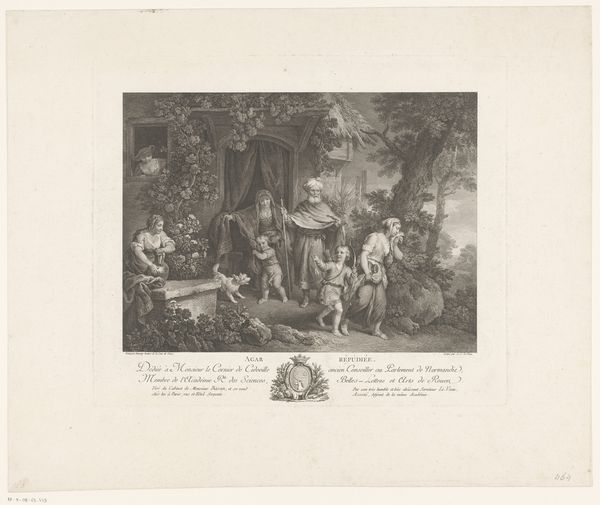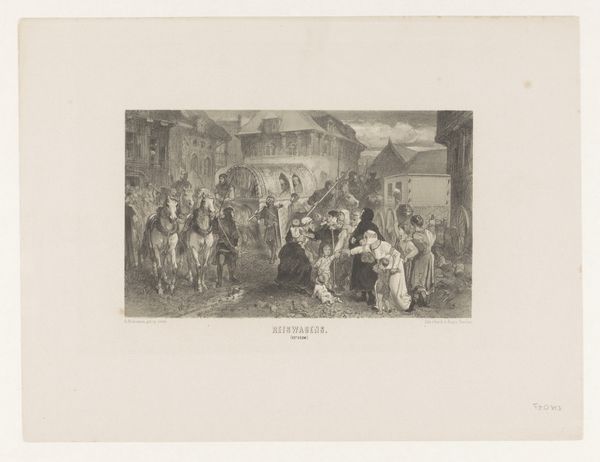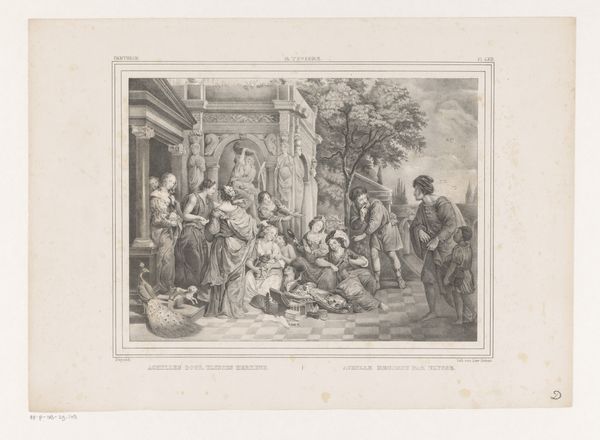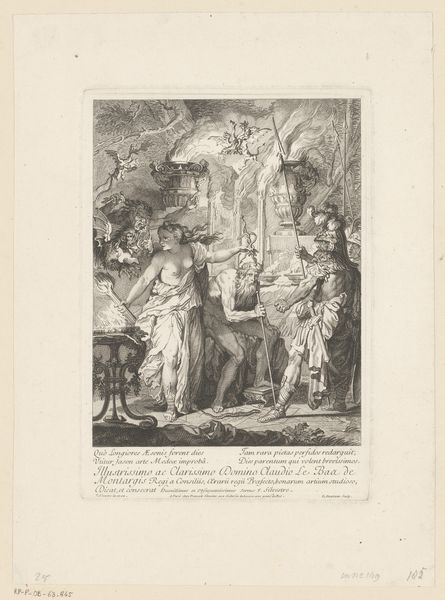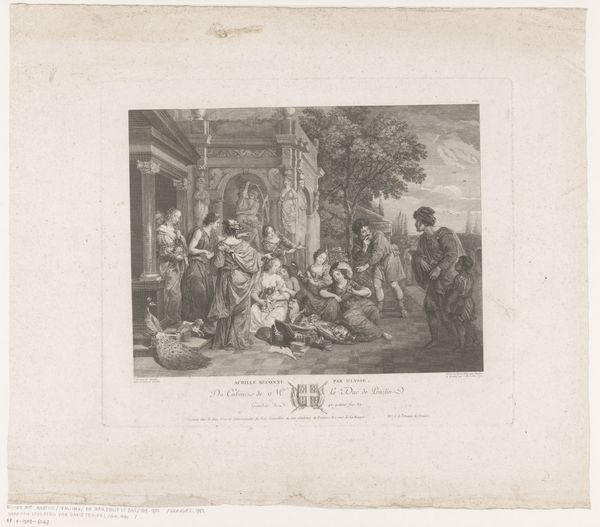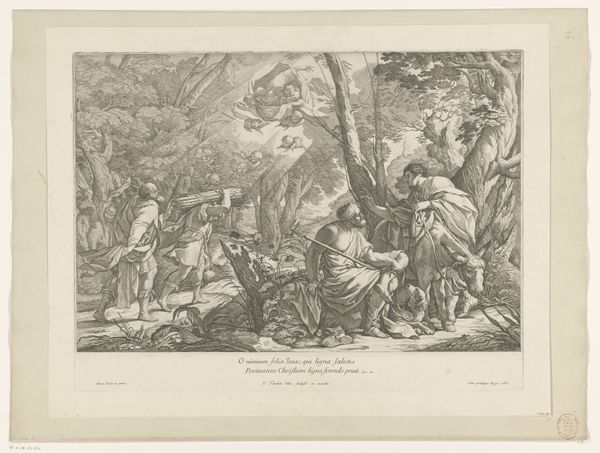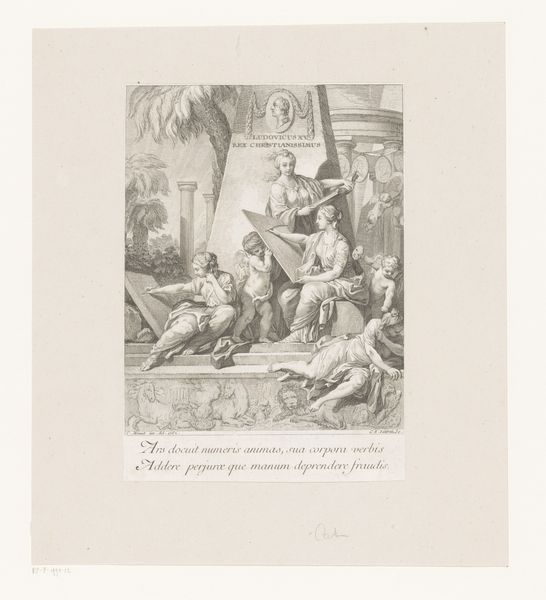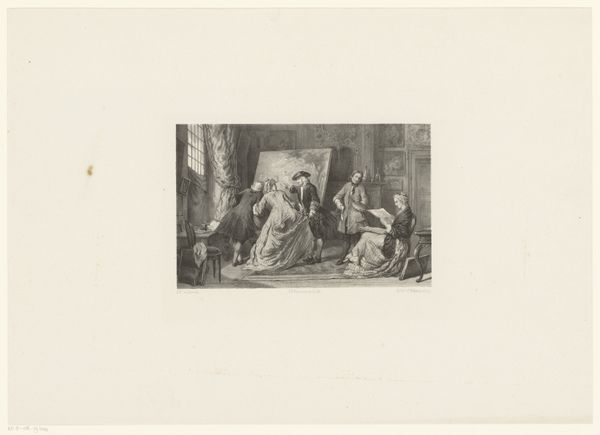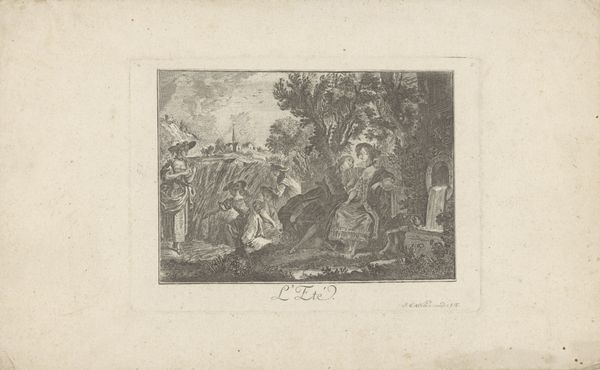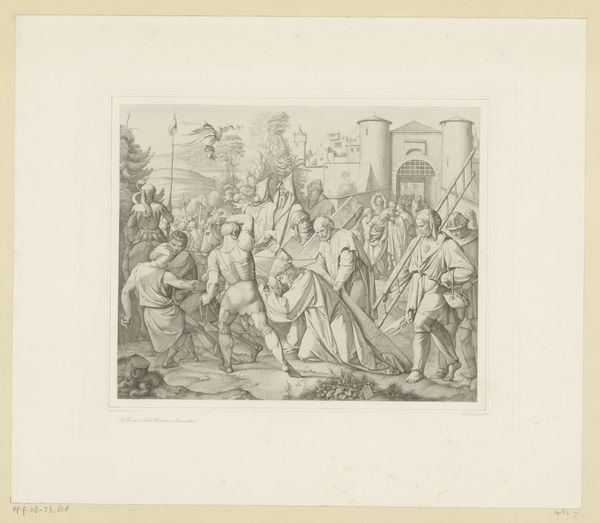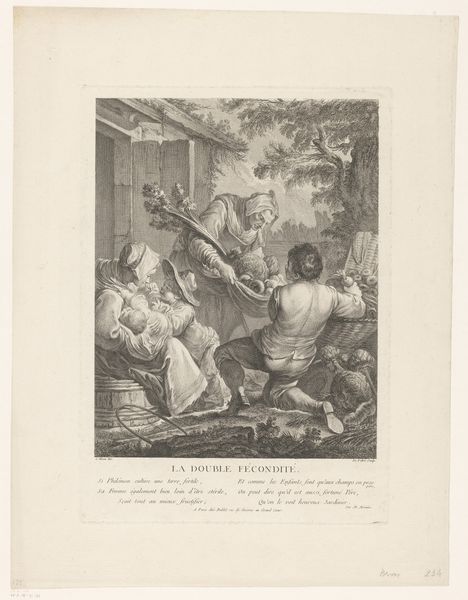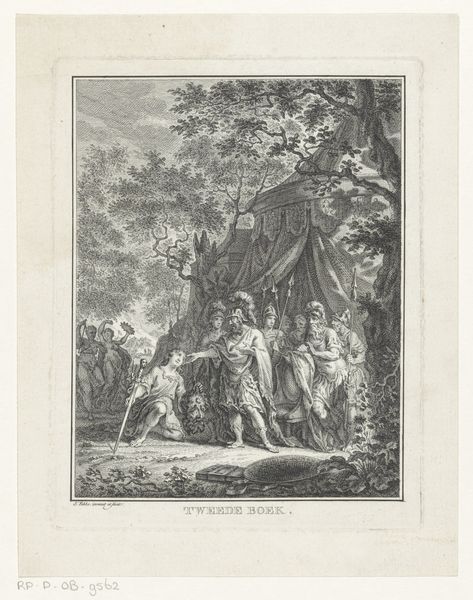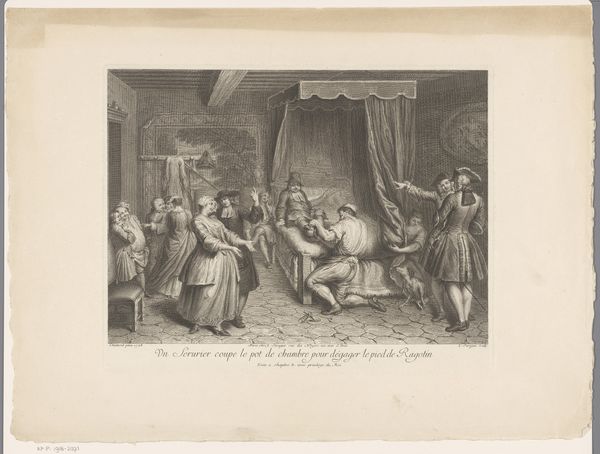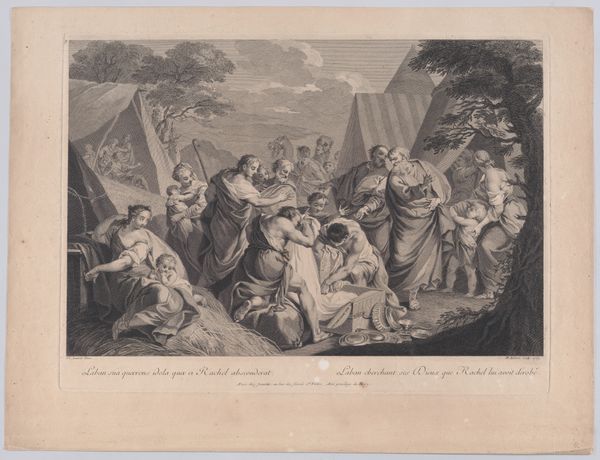
print, engraving
#
baroque
# print
#
old engraving style
#
landscape
#
genre-painting
#
northern-renaissance
#
engraving
Dimensions: height 249 mm, width 313 mm
Copyright: Rijks Museum: Open Domain
Curator: Look at this Northern Renaissance engraving titled "Verschillende figuren lunchen in de buitenlucht," dating from somewhere between 1706 and 1720 by Gilbert Schouten. The translation of the title alone feels refreshing. Editor: It does offer an immediate breath of fresh air! Though it's an engraving, I find the overall impression strangely… chaotic. Almost as if a multitude of social dynamics are vying for our attention in a limited space. Curator: Indeed, the scene is brimming with symbolic cues related to social interactions, a communal event if you will. Notice how Schouten positions figures near the makeshift dining area; this emphasizes their role in facilitating or partaking in the feast, creating an intimate gathering under what almost appears to be a temporary, theatrical tent. The midday repast transcends basic subsistence, becoming a site where status and class performance take center stage. Editor: Precisely, a center stage for both participation and exclusion, and it strikes me how Schouten seems aware of power dynamics shaping who eats where, when, and with whom. The fire on the right, with figures clustered around, highlights the disparity of access, doesn't it? What social statements is the artist trying to weave? Curator: It's likely an interplay between social commentary and idealized vision of rural life that’s rooted in longstanding class anxieties. Feasting imagery can symbolize abundance, which could signal to societal stability but then the inclusion of laborers implies a tacit awareness of economic underpinnings. It acknowledges their contribution. This image, filled with figures carefully arranged, subtly acknowledges—and perhaps critiques—existing social structures. Editor: Absolutely. By staging this scene with diverse participants, the artwork opens to interpretations around communal identity and hierarchical position, particularly regarding labour, class and family, even, as that gathering near the fire on the right seems self-contained as an intimate huddle of folks. Are we sure about the proposed dates for this print? Something about the overall feel puts it back another century. Curator: It's tough with prints, many styles took a long while to fade from usage. But regarding symbolic weight: Look at the almost sacramental presentation of food and drink. And on the tent itself as artifice: could this midday feast be symbolic for the impermanence of leisure? Or earthly pleasure, and community bonds being strongest during our consumption, for survival, perhaps? Editor: What I'm taking away is a multilayered engagement. The print reveals, celebrates, and perhaps also quietly indicts social behaviours that stretch across eras, connecting art to critical cultural analysis and timeless questioning. Curator: I would agree, yes, connecting our collective histories by this one small communal act.
Comments
No comments
Be the first to comment and join the conversation on the ultimate creative platform.
